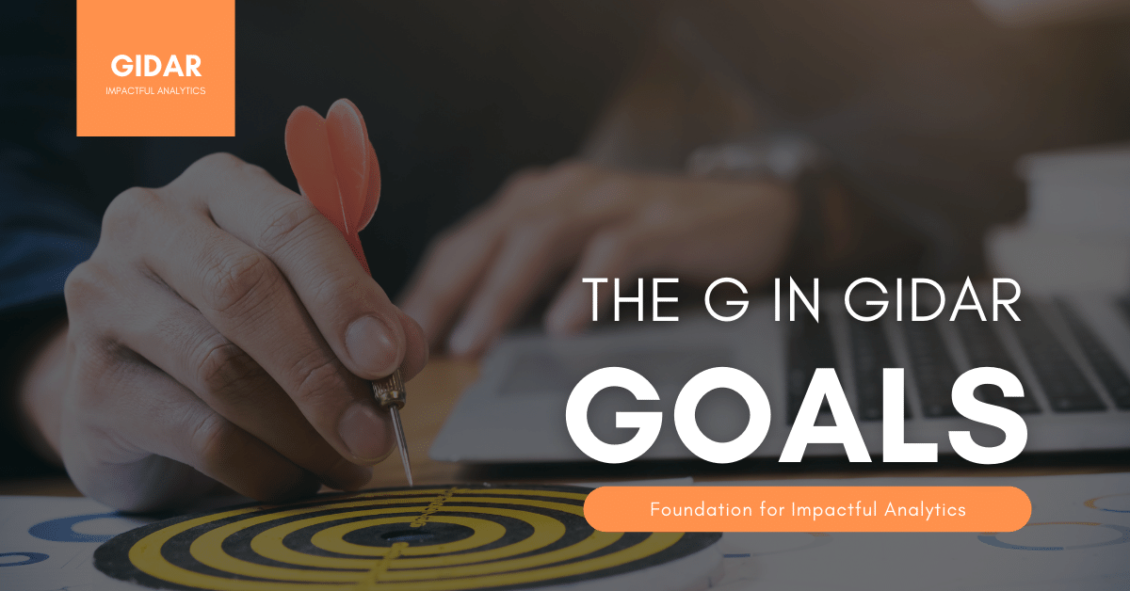The G in GIDAR: BUSINESS GOALS
Goals are intrinsic to any business, even if we do not explicitly declare them, there are always goals behind any activity. A known problem in Business is, however, the inability to articulate Business Goals properly.
Table of Contents
Business Goals are the first and essential step in the entire GIDAR framework. Without purpose, there is no project. If after your stakeholder’s meeting or Business Goals Workshop you don’t have a clear understanding of what you are trying to achieve, you shouldn’t probably be spending resources. In that case, it would help if you revisited your company vision, mission and strategy.
The best way to set a successful Goal is to use SMART goals.
Business Goals must be:
● Specific: If possible numeric
● Measurable: You should be able to track it
● Achievable: Must be something doable (Avoid x10’s)
● Relevant: Have to bring a positive impact.
● Time-bound: Must have a beginning and an end in time.
One more thing your goal should contain is as much as possible a baseline. If you are to increase sales, you should know where your sales were last year or last month.
The more thoroughly you define these steps, the more likely you are to succeed.
Examples of poorly defined Analytics Goal:
● Increase customer NPS (Net promoter Score)
Example of well defined Analytics Goal:
● Increase average customer NPS from 4 to 25 – Specific
● We will use the customer surveys to obtain the data and process it into a monthly report. – Measurable
● We are confident to reach 25 because that is the industry average. – Attainable
● Customers with NPS above 20 spend, on average $100 more per year. – Relevant
● The analytics part of this project will be completed between 20 and 25 days. After delivering Insights and recommendation, we expect four months to implement actions and another 60 days before we measure the results. – Time-bound
Examples of poorly defined Analytics Goal:
● Increase sales
Example of well defined Analytics Goal:
●Increase sales for “Jumpy Shoes” Category by 5% from 10,000 units/month to 10.500 Units month. – Specific and with a baseline
● We will use the ERP data to measure the increment and Marketing Data to assess the campaigns’ impact- Measurable.
● The 5% is based on the industry forecast for these products next year and the competitive market share.- Attainable
● “Jumpy Shoes” category A represents 20% of our global sales. Moreover, a 5% increase will enable the launch of a new shoe category – Relevant.
● We will measure results on a bi-weekly basis during the next six months. There is the first milestone of +2.5% on month three and a final report after month 6.
Note how we have gone from a broad question to a more specific query. When you have worked out such detailed Business Goals, it is more evident for all parties what they are trying to achieve.
Business Sponsor and Analytics teams can now move to the next phase of GIDAR, Information.


2 thoughts on “The G in GIDAR Analytics: Business Goals”
Comments are closed.